BLM Director tours Fort Belknap's 'Seeds of Success' program

The remote interior of the Fort Belknap Indian Reservation is a land where the prairie rises to meet the sky in an unbroken line that stretches as far as the eye can see. It’s a quiet place, where the song of the mountain plovers and squeaks of black-tailed prairie dogs are filtered only by the moaning of the wind and the evening’s chorus of crickets.
It is also the site of one of the last remaining fully intact short grass prairie ecosystems in the United States. At the time of European contact, the short grass prairie dominated millions of acres of high plains stretching north from central Texas across the eastern foothills of the Rocky Mountains and on into Alberta.
According to the Grassland Heritage Foundation, less than a quarter of America’s short grass prairie habitat remains, and most of what does lies in small, isolated fragments degraded by invasive plant species and depleted soil conditions.
Restoring what remains of America’s short grass prairie ecosystems has been identified by the Bureau of Land Management (BLM) as a priority in the agency’s efforts to rehabilitate the landscapes it administrates. On June 11 the BLM’s national director, Tracy Stone-Manning, paid a visit to the Fort Belknap Indian community to observe the progress being made by a multi-organization effort led by the BLM called Seeds of Success.
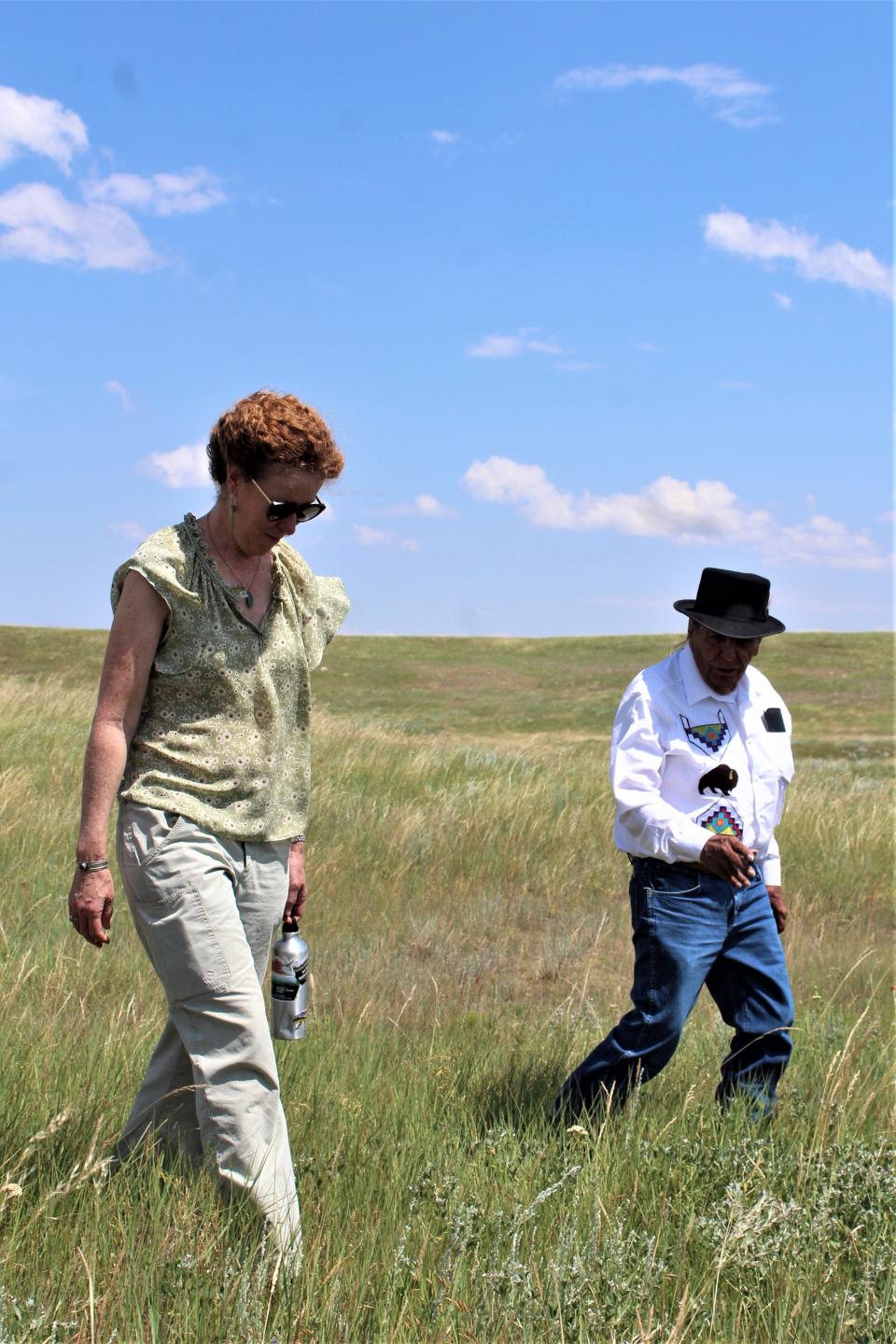
“Our job as land managers is to leave options on the table for future generations,” Stone-Manning said during a meeting with its Seeds of Success partners in Havre. “Those options are on the landscape but they’re also through our partnerships. The only way we ever get anything of value done is working together with others.”
“That’s everything from work to ensure that the forest can receive fire in a less threatening way to work in grasslands taking out acres and acres of cheat grass and getting back to bunch grass communities so that we don’t get into that fire to weeds cycle,” she added. “Mercifully that’s not really come to Montana like it has come to the Great Basin. That’s the kind of thing we’re aiming to prevent here.”
The Seeds of Success program was established by the Department of the Interior in 2001 to collect and conserve native plant seeds for the restoration of public lands degraded by fire, soil degradation and invasive species. According to a BLM web site, the Seeds of Success program has already established more than 27,000 individual native seed collections in its national collection.
What is unique to the program’s current efforts in Montana is its close collaboration with the Assiniboine and Gros Ventre tribes of the Fort Belknap Indian community.
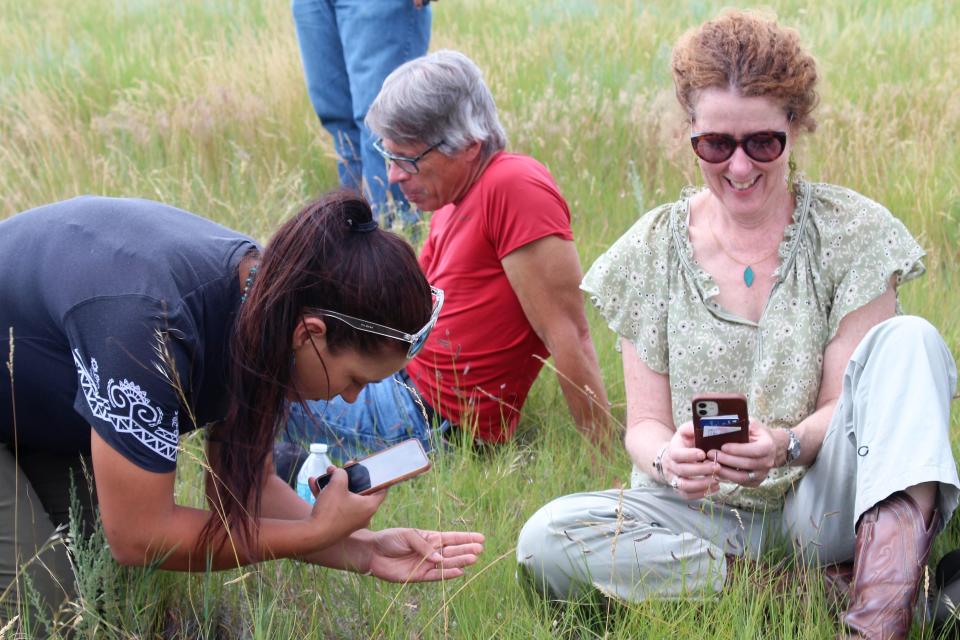
Up until recently much of the work being done by the Seeds of Success program focused upon plant communities of the western forests. Far less had been accomplished in establishing seed collections for the grasses and sedges of the high plains. According to Wendy Velman, lead program botanist for the BLM in Montana and the Dakotas, as recently as a decade ago there was little cataloged knowledge regarding the environmental and cultural significance of short grass prairie plant species in Montana and the Dakotas.
“When I began looking at the availability of native seeds, I found that there’s very, very little available in this region of the world,” Velman said. “One of the things I kept asking myself was … who in the world are the people who have the knowledge for this? It’s the tribes. They’ve lived on this landscape and they’ve known this landscape since long before any European settler ever came here.”
That realization has led to a realignment of relationship between the BLM and the Gros Ventre and Assiniboine people of the Fort Belknap community. For decades this relationship was parochial, with federal representatives handing down advice and direction on land management with little regard for the cultural knowledge of the people who live there.
“We’ve had a lot of tribal policies and laws come down that were developed from outside our worldview and outside of our culture,” said Marcia Pablo, tribal coordinator and program analyst for the BLM in Montana and the Dakotas. “There’s one way of looking at the world from the dominant society and there’s another way of looking at the world from an indigenous point of view.”
“What so often happens is that people show up with a proposal and funding in hand and say, ‘this is what we’re going to do, “explained Cristina Eisenberg, Associate Dean for Inclusive Excellence and Director of Tribal Initiatives from Oregon State University, “but each community is different. Each tribe is different and will have different priorities. It has to be done with respect for the sovereignty and self-determination of tribal nations … with consent and honest engagement at every step.”
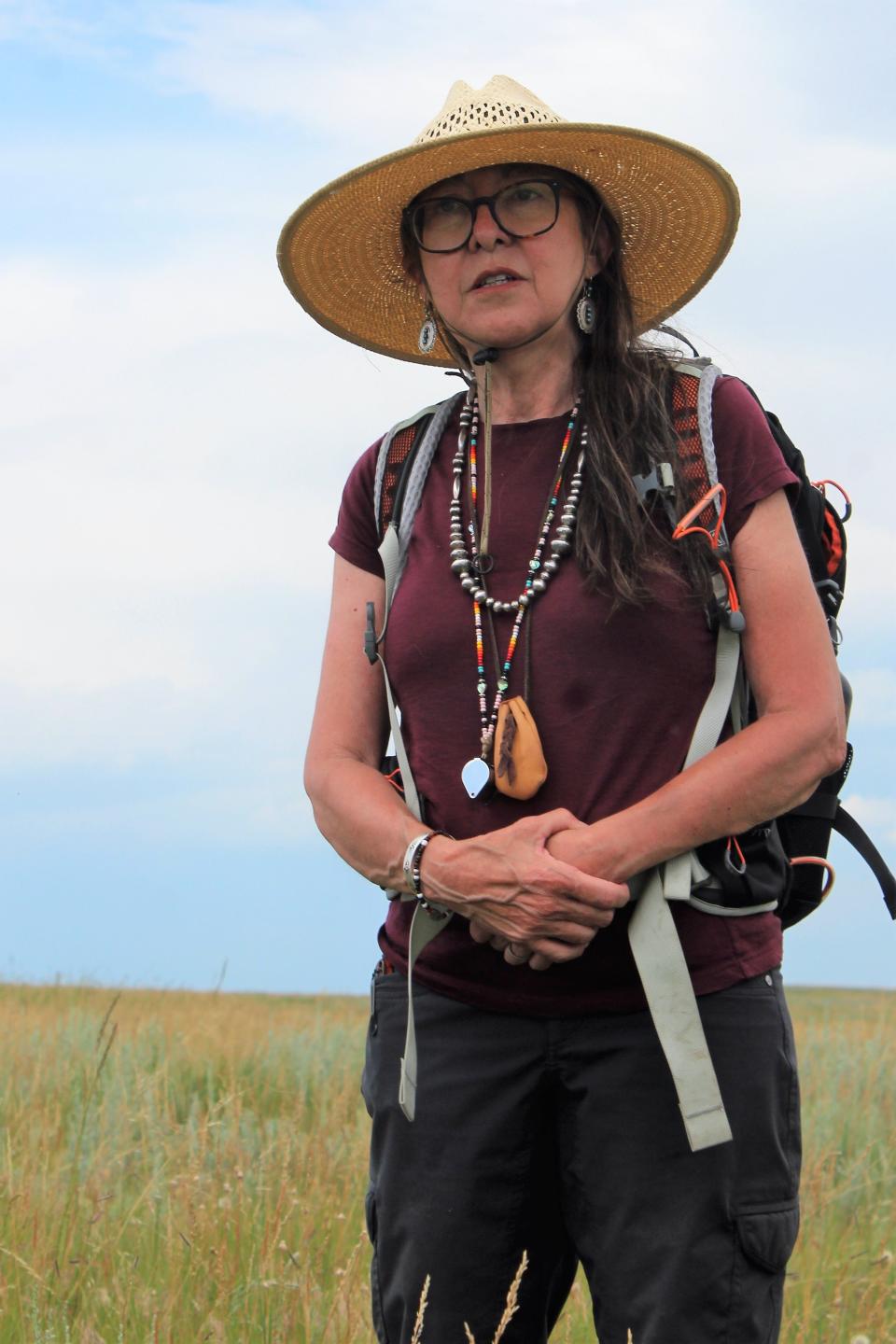
Eisenberg wrote the original proposal for the project in 2018 and has served as its lead principal investigator since that time. The project is sponsored by OSU's College of Forestry, which is also working with the nine federally recognized tribes of Oregon using their traditional cultural knowledge of western forests to preserve the wild seeds found there.
The program was given a major financial boost in 2021 with passage of the Infrastructure Investment and Jobs Act The bipartisan spending measure added $550 billion in new spending with a focus upon investments in roads, railways, bridges and broadband internet. However, environmental restoration was not left off the table within the broader investment structure package.
“There’s $200 million for the national seed strategy,” Stone-Manning noted. “One hundred thirty million of that is going to the U.S. Department of Agriculture. $70 million of that is going to the Department of the Interior. Not all of that has been allocated, but we’ve allocated just shy of $1.5 million for this particular project.”
That funding comes in addition to another $800,000 previously allocated to the program.
"Here we have this remarkable once-in-a-generation opportunity, with a bunch of funding for restoration, the BLM director added. "That restoration needs native seed. We’re behind, but programs like this are going help us catch up and do so in a really meaningful way - in a way that makes sense for both plant communities and human communities."
The added funding came just as program advocates at Oregon State University were reaching out to native communities in Montana to expand their focus to the short grass prairies of Montana.
“Our primary goal is to establish a stable supply of native plant materials for public land restoration using indigenous knowledge,” Eisenberg said. “The Fort Belknap tribes invited us to work on their lands almost immediately, and they assigned us to work on some of their most sacred lands.”
It’s a new perspective on federal land management – that the federal government has as much to learn from indigenous peoples as it has to offer. In her presentation to Stone-Manning, Eisenberg described the concept as “bringing together the best of western science with indigenous knowledge.”
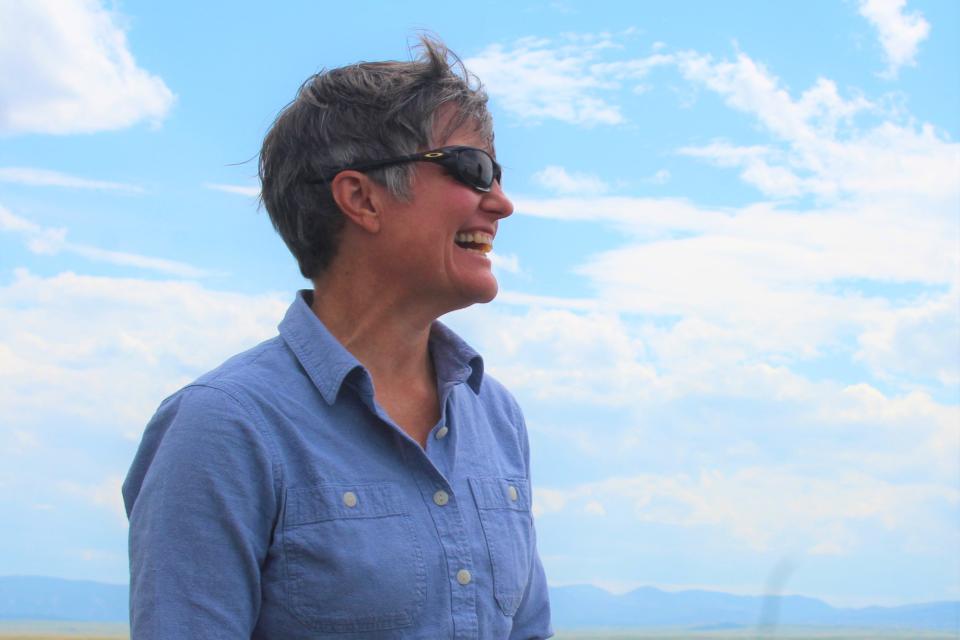
This may all sound rather abstract and philosophical, and it is to an extent, but it has very real and practical applications. Seed collection from western forests is already well established, but on the high plains the knowledge and stockpile of native grass seed is incomplete.
“We have lots of failures to show and very few successes,” said Velman of the BLM’s efforts to restore grasslands across the United States. “One of the big reasons we’ve found for that is that we’re not using the right seed in the right place at the right time.”
A primary goal of the Seeds of Success program is to create a repository of native seeds to draw from to replant damaged landscapes. The tiny seeds from target species such as green needle grass, June grass, western wheat grass, wild rye, Sandberg bluegrass, buffalo grass, grease grass and blue grama are all being collected to help restore the short grass prairie landscape in Montana.
“We can’t’ do land restoration without native seed,” Stone-Manning said. “There’s a lot of restoration work to do and we don’t have enough native seed to do the work. We know that for restoration to have lasting effect the best way to go is with native seed. The partnership that we’re creating with OSU and the tribe with this work will have ripple effects across time.”
Ecological restoration is just a single component of the Seeds of Success programs greater effort. The project also seeks to expand opportunities for native youth within the Fort Belknap Indian community. Over the past four years the Seeds of Success program has hired a total of 50 student employees, of which 42 come from the Fort Belknap Indian community. The goal, according to Stone-Manning, is to open doors to higher education and self-improvement for the young people of the Fort Belknap Indian community.
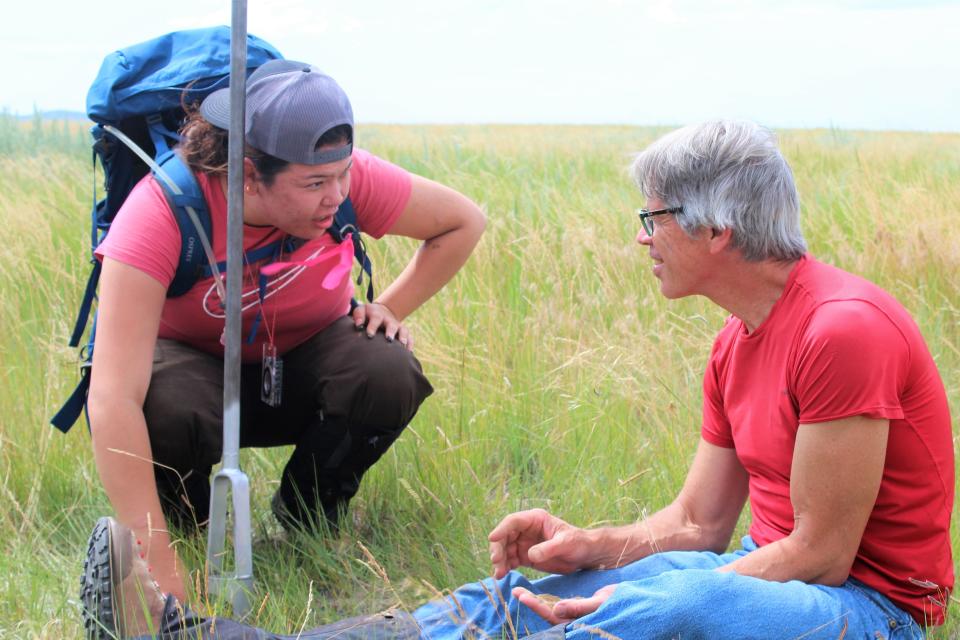
“Secretary Haaland has been very clear at the Department of the Interior … about not only our Trust responsibilities but our broader responsibilities to tribal nations that we engage in a deeper more meaningful way than we have in the past,” the BLM director said. “That has many effects and one of those is healing.”
That goal was expressed in the words of Savannah Spottedbird, a 19-year-old native American woman who came from a troubled past, but who is now enrolled in college and studying toward a degree in soil science.
“I was on a really bad journey three years ago and I lost myself,” Spottedbird said of her life before enrolling in the Seeds of Success program. “I’d been drinking a lot and I’d been in a lot of bad situations. I got the key out of that hectic world because I was given the key. I was shown a different way to life. I’m glad to be here, that’s for sure, and I’m glad to be on the journey that I am. I’m in a lot better place than I was even five months ago.”
“This is just the beginning," said Pablo. "There are other tribes in Montana who would like to do the same thing, and I would like to see the BLM reach out to them in our co-stewardship effort and see if there are plant communities they want to preserve and protect."
"How do we help them perpetuate their cultural plants, their culture, their traditions and their value," she asked. "That’s basically what we’re all about."
“One story like that is worth doing it alone,” Stone-Manning said of Spottedbird’s personal account, “and those stories are repeating themselves. It’s our singular focus, so we can pass along these lands as good or better than we found them so that the future has options. In a time of climate change, we need as many options as possible.”
This article originally appeared on Great Falls Tribune: Montana's prairie restoration program and native seeds in Fort Belknap

